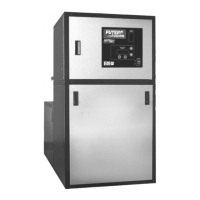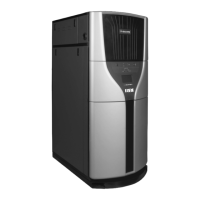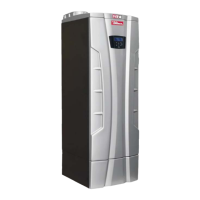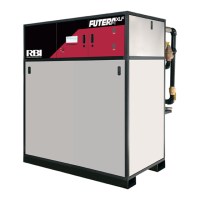117
15 - MAINTENANCE
15.9 - Draining the water
from the heater
To drain the water from the unit, follow the steps
below:
1. cool down the unit setting the control
temperature to the minimum (see section
14.6 and 14.7) and wait the temperature
gauge “N” of Figure 14-1 shows less than
104°F (40°C);
2. turn the power off to the heater;
3. close the manual gas shutoff valve, Figure
12-1;
4. close the heater isolation valves, in the
heating system. If isolation valves haven’t
been installed, the entire heating system will
have to be drained.
5. check that the heating system fi ll valve is
closed;
6. connect a hose to the drain valves and place
the other end of the hose in a sink or some
other suitable drain;
7. open the drain valves and wait for all water
drain;
8. if unit isolation valves have not been
installed, open any bleed valves at the
highest point of the system;
9. after draining out all the water, close the
bleed valves and the unit drain valves;
NOTICE! The heater cannot be drained
completely of water without purging the unit with
an air pressure of 30 psi.
WARNING!!!
Do not recover and/or
re-use water drained from the heating
circuit for any purpose as it could be
contaminated. Failure to comply with
this warning can cause extensive
property damage, severe personal injury
or death!
15.10 - Water and fl ue
temperature sensor
The heater has a number of sensors that
measure temperature. The electrical resistance
between the sensor wires must correspond with
the values shown in Figure 15-14.
15.11 - Outdoor
temperature sensor
An outdoor temperature sensor can be
connected to the heater (see section 10.1.3).
The electrical resistance existing between the
sensor wires must correspond with the values
shown in Figure 15-15.
Figure 15-14 Water and fl ue temperature sensors’
curve
Figure 15-15 Outdoor temperature sensor curve
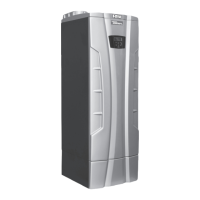
